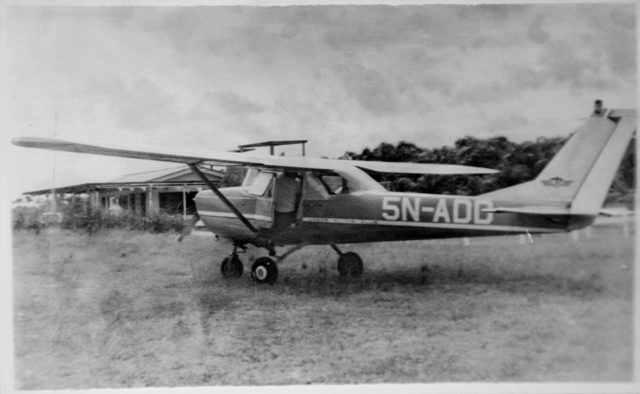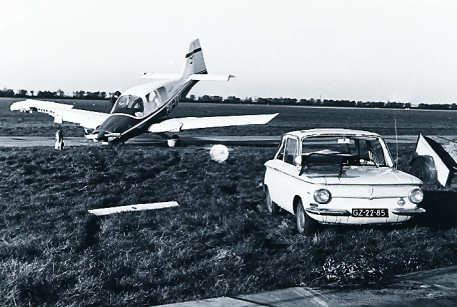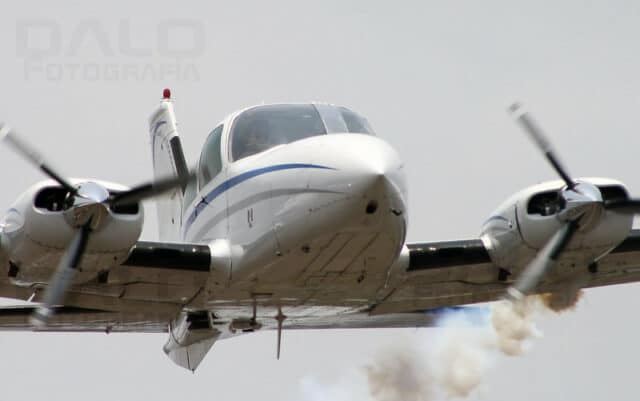“I kept my eyes closed”: Rudy’s adventures in aerobatic flying
Last month, we lost Chuck Coleman in Las Cruces during an advanced aerobatic manoeuvre. The tragedy has sparked many conversations in our community about limits, risk assessment and aerobatic flying. Our regular contributor Rudy sent me this thoughtful piece about his own journey with aerobatics, from a student who initially kept his eyes closed during spin training to a pilot with over 22,000 hours under his belt. His perspective on knowing your limits feels especially relevant right now.
“I kept my eyes closed”: Rudy’s Adventures in Aerobatic Flying
by Rudy Jakma
When I started flying I was initially strictly a “right-side-up” pilot. Turns more than rate-1 were steep enough for me.
This changed gradually. During training we had to practice 45 degree angle turns. My first feeble attempts were on Piper Cubs. Docile aircraft that were underpowered and in no way aerobatic.
After about 7 hours I soloed.
I continued taking flying lessons when working in Nigeria where I joined the Lagos Flying Club.

The aircraft was a C150, usually 5N-ADD. One of the instructors, Gus Ashby, surprised me by telling me that for my Private Pilot Licence, I had to do spins.
5DD was a standard Cessna 150, not an “Aerobat” and so Gus took me totally unprepared. I had no intention to try spinning an aircraft.
So, when Gus announced that we were going to do spinning exercises I told him that I was feeling a bit tired, and preferred to leave it for the next lesson. Which of course was a lie; I more or less decided that maybe after all, flying was not for me, and I had decided to end there and then.
Gus saw right through it, climbed to 2000 feet and told me to watch it closely as he was going to demonstrate the spin first. The Nigerian syllabus followed the British CAA, monitored by the ARB.
But I kept my eyes closed, and did not know what had taken place apart from experiencing some unusual sideways forces.
When it became clear that Gus was determined to finish the exercise I watched him do it.
And then, oh horror, he made me do it.
It was not nearly as terrible as I had expected; in fact it helped to overcome my fear.
My next instructor was Colin Horsfall. He followed the American system and introduced me to chandelles and lazy eights.
After my “stint” in Nigeria it took me a long time before I tried aerobatics again, but this time mainly because I needed all my money for my CPL.

The Rotterdam Flying Club owned a pair of Beagle Pups. They were cleared for some mild aerobatics and I went for some aerobatic lessons there.
When I finally found a job beyond banner towing, sightseeing and photo flights on a Cessna 310, I joined the Tiger Club, then based at Redhill, Surrey.
I had some instruction from the late Neil Williams in a Stampe SV4 owned by the Tiger Club.
I did not like aerobatics in the Tiger Moth, but the Stampe SV4 was much better for the purpose. The Stampe looked similar to the Tiger Moth, but the fuselage is a bit shorter and the Renault engine was very similar to the Gypsy in the Tiger Moth. There were more differences though: The Stampe did not have slats and it had ailerons on all four wings. This made it very much more manoeuvrable. It had brakes, applied by a handle at the side of the cockpit, and a tailwheel. And it had an inverted fuel system.
It had a G-meter (accelerometer) showing the Gs pulled. One showed the actual G, two other needles the maximum positive- and negative loads pulled during the flight. They were supposed to be left for the next pilot to check if the aircraft had not been overstressed by the previous crew. So only the incoming pilot (or a qualified mechanic) was supposed to cancel them. Of course, less scrupulous pilots, if they had pulled too many Gs, cancelled it during the flight and then engaged in a few manoeuvres that were within limits. Cheating the next pilot into thinking that all was OK.
This had happened to Neil when he did some training in a Zlin Trainer. This was a metal aircraft which had been overstressed by a previous pilot; this had caused fatigue and during an exercise well within the limits one wind folded.
Neil was not wearing a parachute, but he was so cool and so supremely skilled that he inverted the aircraft. Not only that, he even in that split second knew which way to roll. The wing came back in place and he flew the aircraft inverted until he was nearly on the ground. He rolled the Zlin back and escaped with minor injuries.
Our “Aresti” manoeuvres were limited to, if I remember well, +4 G. I also forgot the negative limit, perhaps -1.5. Nothing for Neil, but it felt uncomfortable to me. And I HATED inverted spins. So Neil did not think much of my aerobatic prowess.
Once I went with a French instructor from Cannes Mandelieu in a Cap-10. We flew inverted over a lake where Canadair firefighting aircraft were scooping up water to combat forest fires. It was funny seeing them looking up. OK, we were flying upside-down.
Later, I went up for half an hour in a Yak 52 with a Russian ace Victor Lubashenko. When I entered the circuit and started turning downwind, His voice came through the intercom: “This aerobatic aircraft, minimum bank 45 degrees!”
So yes, “Aresti” was not my favourite.
It was developed by–yes, you guessed right–an aerobatic champion, Aresti.
Competition aerobatics were (are) judged not only by the sequence of manoeuvres and their level of complexity, but they are also supposed to stay within a certain space.
Judges sat in front of a large frame, like a picture frame but without a picture.
At a calculated distance from this frame, they observed the sequence, which was supposed to remain within this frame. Meaning: the pilot was supposed to arrange his or her sequence, keeping “the line” so that from the judges’ viewpoint it all looked straight, and fell within that area.
On windy days, pilots at the higher skill level could adjust their exercises to include drift corrections.
Meaning that a manoeuvre might not look straight, except from the angle of the judges.
Aresti had devised a system whereby each manoeuvre would be shown in the form of a symbol, kept small to be written on a kneeboard. That meant that changes in direction, be it in the vertical or horizontal plane, would be represented by ninety degree angles.
The legend goes that a competitor found the kneeboard with the sequence in Aresti’s cockpit and copied it.
This led to the adoption of the “Aresti system”, whereby pilots make very sharp changes in direction.
It makes sense, because it enables them to cram more manoeuvres into the “box”, but it led to competitive aerobatics being very harsh.
Another Aresti joke was that a competitor had compiled an impossible sequence for the compulsory part of the exercise. He wrote it down on a sheet, similar to the one used as clipped on the kneeboard. At a moment when he was not being watched, he replaced the official sequence with his made-up and virtually impossible sequence. When the pilot after the briefing came back to his aircraft he must have been perplexed.
The story, told by Neil Williams, did not tell if this was corrected for the hapless competitor in time.
Neil wanted me to do it the “Aresti way”. I did not like it and besides,there was no chance that I would ever progress to competition aerobatics. I much preferred the more gentle recreational style of aerobatics, in fact unless one has unlimited access to a dedicated high-end aerobatic aircraft and practices on a virtual daily basis, competition, “Aresti” style of aerobatics is too physically demanding for the average pilot.

I was not interested in “Aresti” because although I was a member of the Tiger Club, virtually all of my flying was IFR on the C310. My boss did a lot of business in the London area, and I managed to convince him that, after clearing customs at London Gatwick, it would save a lot of money in parking fees if we repositioned to Redhill. I even kept a car there, a Ford Cortina.
We flew to Gatwick virtually every week and the Tiger Club chairman, Michael Jones, only half jokingly commented that as an overseas member (reduced membership fees), I actually was making more use of the club and its aircraft than many local members.
What I had learned in all my earlier flying was that in manoeuvres close to the limits, a mistake of a split second can lead to an accident. And close to the limits, there is little margin of error, often zero.
Neil Williams was one of the first West-European pilots who observed East European gyroscopic manoeuvres, then called “Lomcovak”. It took him quite a while to figure out how to duplicate this.
The exercise that sadly took the life of Chuck Coleman was, if I get it right, one of the even more extreme forms of the lomcovak.
This brings pilot and aircraft right at the edge of the limit. Of the aircraft more especially because it requires a great structural integrity of the airframe.
Of the pilot, because it is very violent and can lead to disorientation, however brief.
And when a manoeuvre is entered too low, there is little or no room for recovery. No room actually, as what happened in this tragic accident.
I have never met Chuck, but may he rest in peace.
I once was asked to demonstrate a Stearman biplane at an airshow. Its handling felt much different from the Tiger Moth or Stampe and the cockpit was much wider. I only had two hours in the type, so I just refrained from aerobatics. Just some sharp turns and fly-pasts. They could be safely done close to the public and gave them a good view of the aircraft.
I probably disappointed many, but I just did not feel comfortable. Certainly not whilst demonstrating the aircraft at a show.
In my past career, I have often been a “bold pilot”. My displays of stupidity and ignorance just had not led to an accident.
Lessons learned, yes. I never had an accident.
Most (not all, I did roll a Cessna Citation) lessons were applied. But I was mostly careful not to come “too close to the edge”.
I retired with over 22.000 hours in my logbook.
I especially appreciated Rudy’s perspective on airshow flying in the Stearman: a reminder that good decision-making isn’t just about knowing what you can do — it’s about being clear about what you shouldn’t.
I’m in the US for the next couple of weeks but I hope you enjoy the selection of guest posts that I have selected for you.








Thank you, sir. Your stories are always interesting and leave one sitting there thinking for an hour.
+1
“I probably disappointed many, but I just did not feel comfortable.”
If Douglas Bader had been as willing as you to “disappoint many” in December 1931, he could have kept both his legs and bypassed eight years of retraining and recertification. Instead, he responded to a dare, and crashed while performing acrobatics in an unfamiliar type.
Bader was a flying legend but the most useful chapter in his legacy is a keen object lesson on knowing your limits and respecting them.
I’m also impressed by Rudi’s willingness to “disappoint many”.
A friend of mine, not very experienced, had a delightful little 7/8 scale SE5 I’d flown a bit. We were at a Masterton airshow and he had a short display booked with the SE5. As his display time approached he was on the wrong side of the airfield, so I started up and taxied over to him.
When I drew up he came over and, without a word, started securing the harness around me. I went over to take off at the due time, knowing that I was about to do the most dangerous thing I’d ever done – an unrehearsed display.
Like Rudi, I kept it to slow and fast passes, with chandelles at each end and a steep, slipping turn to a slow landing, much the same as I’d done with my Turbulent. No, I’ve never regretted deciding not to put the manoeuvres I’d practiced on the little SE into an impromptu routine.
That may have been the most sensible thing I’ve ever done.